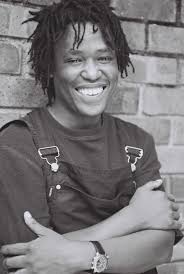Sandile Dikeni

Kenneth Stainbank Nature Reserve
Coligny, North West Province
The town lies 193 km due west of Johannesburg on the road to Lichtenburg, which is 29 km away. Originally named 'Treurfontein' (well of sadness), the name was changed to honour Admiral Gaspard de Coligny, a staunch French Huguenot who was killed in the Massacre of Saint Bartholomew’s Day (24 August 1572) in Paris.
At first sight, Coligny gives the impression of being just another dusty, windswept Village – forgotten in the mists of time and bypassed by modern life. In a way it has retained its “old world” character, but it hides a wealth of History and fascinating character. With the last sitting of the parliament of the old Transvaal Republic, before the Union of South Africa was formed in 1910, General Koos de la Rey, representing Lichtenburg, managed to get his proposal accepted for the railway line to be extended from Welverdiend in the East through Coligny, to Lichtenburg and South to Delareyville.
A Year later, the plumes of the first locomotive blew over the area, signalling the birth of a Town. Even though it was built on the Farm Rietvlei, it was named: 'Treurfontein'. This was to distinguish it from the Rietvlei station near Heidelberg, in Gauteng. The station is still the heartbeat of the Town, with lines spreading to all four points of the compass. In 1910, all that could be seen among the waving maize crops, was a lonely building, housing a school with two teachers and 37 students. Soon after the establishing of the station, a shop built from corrugated iron was put up by the brothers; 'Mangelsdorf'. Sixteen years later, the NG Church was completed. It was later extended as the congregation grew. Originally it was named: 'the Welgemoed-Congregation'. The editor of the newspaper “The Western”, H. J. Malan, however urged them to change the name to 'Coligny', after the famous Huguenot leader, Gaspard de Coligne. He was murdered on August 24, 1572 during the Bartholomew Night, or Bloody Night, when 10 000 protestants were murdered by the Roman Catholic monarch. Many Huguenots, later fled to South Africa. After this name change, authorities were urged to also change the name or the station to Coligne.
In 1922 it was declared a Township. A Town council was constituted in 1929. The Cemetery lies just off the road to Lichtenburg, about two kilometers out of Town. A Monument to the Town’s eponym, stands in the hall of the local School. Unfortunately all the blockhouses have been demolished and the graves desecrated and unkempt, with cattle grazing freely! (The British war Memorial has grazing among it as well).
Even though blood also flowed in this Town during the 1914 Rebellion, there seems to be little evidence of it. The Silo in the middle of Town and next to the Station is the first vertical Silo to be built in the North West Province and is seen as a symbol of one of the richest maize growing regions in South Africa.
Clairwood Hospital, Durban
Sannieshof, North West Province
Yellowwood Park, Durban
Barberspan Bird Sanctuary
Delareyville, North West
This Historical Town in the vast North West Province has a rich History that is deeply rooted in South African Culture.
It was founded in 1913, after the tragedies of the Anglo-Boer War, and was named after General Koos De la Rey. Today, it continues to be an important hub for farming and for the production of salt. The little Town of Delareyville and the surrounding Farms are occupied by fewer than: 2 000 permanent residents. The Area is an integral part of South African Agriculture. Here, sorghum, groundnuts, maize and sunflowers are the main crops. The farming of cattle and sheep is also common here.
The community’s farming methods are progressive which keep Delareyville, among those in the forefront of the South African Agriculture Industry. The salt pans, with their iconic pink colouration, are a hotspot for flamingos. These elegant pink birds gather in their hordes to feed on the salty little snacks in the pan’s waters.
Delareyville boasts a number of tourist attractions in and around the Town Centre. These include: • The Dutch Reformed Church – this is a National Monument, perched on the main street. • A round of golf at the Delareyville Golf Club. • Facilities for playing tennis, bowls, and netball. • Barberspan Nature Reserve – just 15 kilometers from the Town. 'This is a stunning spot to enjoy excellent bird-watching and fishing, as well as boating'. • The Henk Joubert Game Reserve – home to a number of antelope species (including kudu and springbok), as well as ostrich and zebra. • The Rooiwal Monument – (this is dedicated to some of the burghers who died during the Anglo-Boer War.) • Gestoptefontein – an old house with plenty of Historical import. • An Olympic-sized swimming pool for visitors that want to keep active (and cool). Delareyville is less than 100 kilometers South-West of Lichtenburg and just over 80 kilometers North-East of Vryburg. It takes about 3.5 hours by car from Johannesburg and its International Airport, to this Agricultural hub.